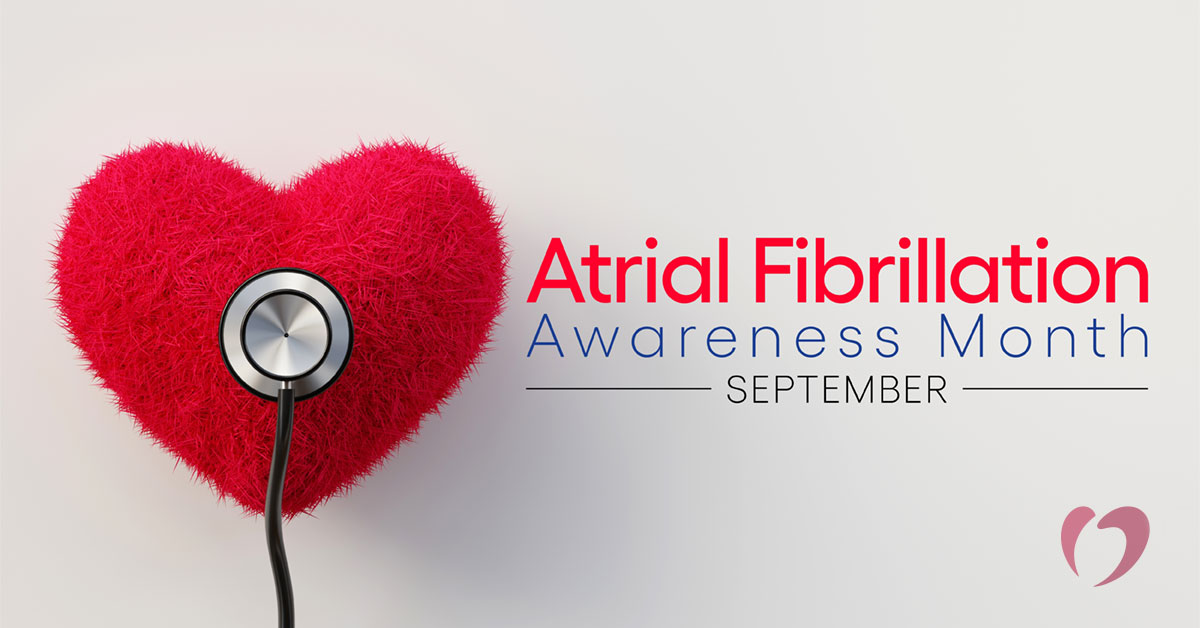Raising Awareness About Atrial Fibrillation

Atrial fibrillation is one of the most common heart rhythm disorders, and it affects millions of people daily. Not everyone who has atrial fibrillation, also known as AF or AFib, is aware of their condition. During September, we recognize National Atrial Fibrillation Awareness Month to help raise awareness about this condition.
The heartbeat is controlled by a tiny electrical signal that causes each part of the heart to contract in a particular sequence and timing. This rhythm allows blood to pump efficiently through the heart and to the rest of the body. When the upper chambers of the heart, or the atria, contract too early, an irregular rhythm occurs.
AFib can be dangerous because it raises the risk of stroke and heart failure. When the atria contract too early, blood does not pump efficiently, and some is left to pool in the heart. Pooling blood creates blood clots. These blood clots can travel around the body and cause problems in various places. When blood clots block the flow of blood to the brain, a stroke occurs.
What does AFib feel like?
Many people with atrial fibrillation are unaware of their condition. Often, it is found on routine screenings during a physical. Others describe feeling like their heart is beating a mile a minute or is jumping out of their chest.
Those who have symptoms may experience:
- Heart palpitations
- Irregular heartbeat
- Weakness
- Dizziness
- Faintness
How is AFib treated?
Treatments for atrial fibrillation vary based on the frequency of symptoms and the length of time the patient has had the condition. There are several treatment options available from which doctors can choose. The goals of treatment are restoring a normal heartbeat, controlling the heart rate, and reducing the risk of side effects, especially the risk of stroke.
Often, treating AFib with medication is an option. There are several types of medications that address different treatment goals. Antiarrhythmic drugs can help restore a normal rhythm. While they do restore a normal rhythm, they also come with various side effects — fatigue, nausea, and sometimes, increased risk of heart attack — so they are not always the first choice in treatment. Beta blockers and calcium channel blockers are two types of medication that are used to control the heart rate. Blood thinners are often prescribed to prevent blood clots and reduce the risk of stroke.
Cardioversion procedures can be performed to try restoring normal heart rhythm. Cardioversion disrupts a heartbeat, which allows the heart to reestablish the typical rhythm. Electrical cardioversion is performed using paddles attached to the chest and an electrical signal that shocks the heart into a restored rhythm. Chemical cardioversion may be used in cases in where electrical cardioversion may not be well tolerated. With chemical cardioversion, the patient is given an IV or oral drug to try and reset the heart to a normal rhythm.
When medications and cardioversion don’t successfully control AFib, the next treatment step may be catheter ablation. In an ablation procedure, doctors access the heart via a catheter to ablate, or destroy, tissue. This creates a tiny scar that can block the irregular rhythm. After successful ablation surgery, blood thinners are typically used to prevent future stroke.
Through routine monitoring and a range of treatment options to manage the condition, most people living with atrial fibrillation have few limitations on their activity and maintain a high quality of life. If you have symptoms or risk factors for atrial fibrillation, contact Oklahoma Heart Hospital for an appointment with one of our heart rhythm specialists.
